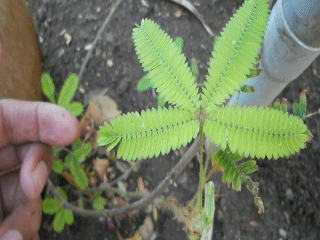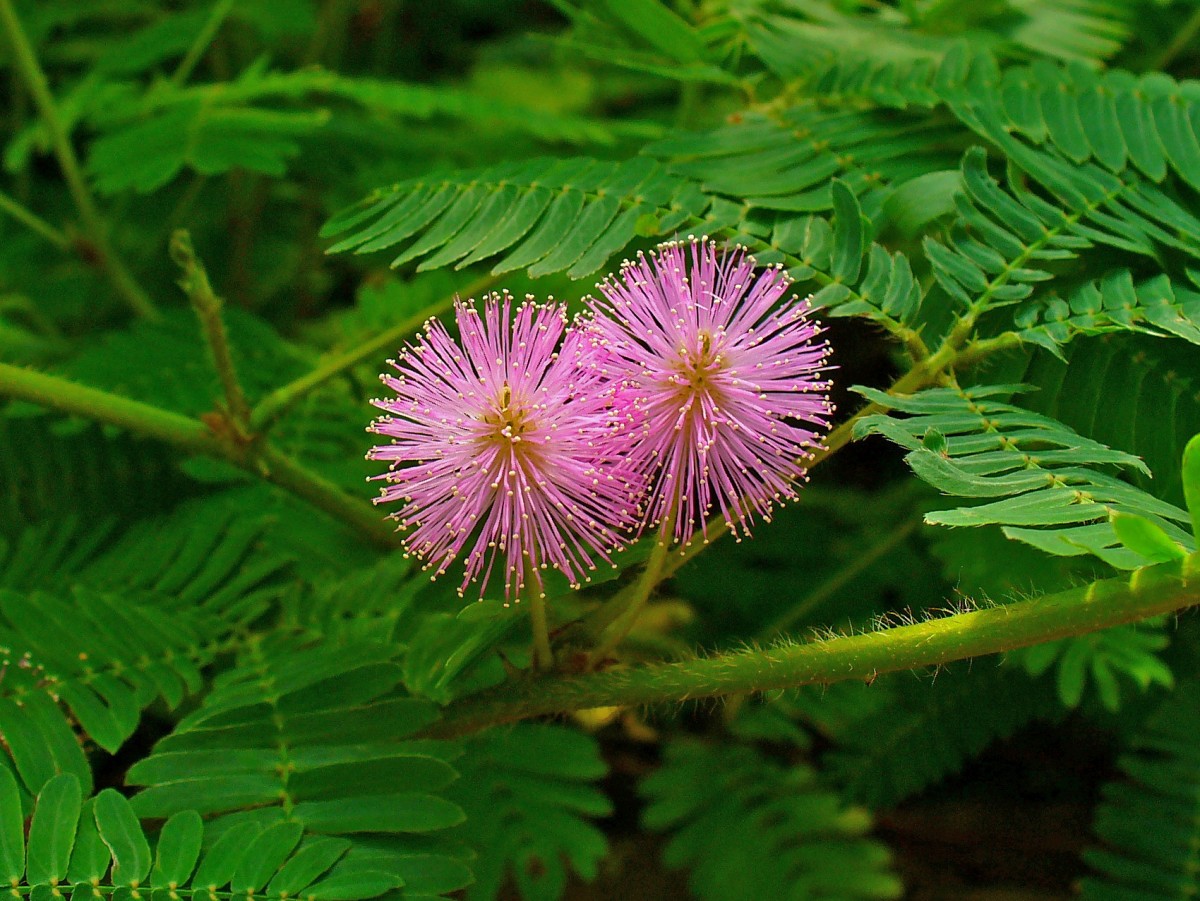I understand a rose by any other name would smell just as sweet but If a rose could smell, would it want to go my another name? If two roads diverge in a yellow wood, what path would the undergrowth take? Throughout history, we have used characteristics of nature to explain the nature of ourselves. Let us turn the tables and learn about the life of Mimosa plants through a taxonomy key for people. So, if I may take the personification of plants to a whole new level, the Mimosa plant is an ISTP (introvert, sensing, thinking, perceiving) type with an insecure, disorganized attachment patterns. Here is why.
 It doesn’t take much to realize the mimosa plant is an introvert. Carl Linnaeus even noted this behavior by giving Mimosa pudica a species epithet that is Latin for “shy, bashful, or shrinking”, which is referencing the response of the plant as it receives stimulus #same #introvertlife. Like other introverts, responding to outside stimulus is a draining process that takes a lot out of them. Their interaction is energy intensive as it requires active transport of multiple ions out of the cell. This means Mimosas get tired and will eventually stop responding to stimulus unless left alone to recharge, which on average takes about 20 minutes (1). If you are interested in how these sleepy plants respond like when they are very sleepy check out the research tab of this site!
It doesn’t take much to realize the mimosa plant is an introvert. Carl Linnaeus even noted this behavior by giving Mimosa pudica a species epithet that is Latin for “shy, bashful, or shrinking”, which is referencing the response of the plant as it receives stimulus #same #introvertlife. Like other introverts, responding to outside stimulus is a draining process that takes a lot out of them. Their interaction is energy intensive as it requires active transport of multiple ions out of the cell. This means Mimosas get tired and will eventually stop responding to stimulus unless left alone to recharge, which on average takes about 20 minutes (1). If you are interested in how these sleepy plants respond like when they are very sleepy check out the research tab of this site!
As a Sensing type, sensory experiences are a priority. This can be seen by the nyctinastic or “night closure” and thigmonastic or “touch closure” movement of the plant. To perform these movements, Mimosa pudica has not only receptors to sense the stimulus for light and touch, but also joint-muscle-like structures at the base of each leaf known as pulvini (2). Within the pulvinus, a multi-stepped biochemical reaction, which we still do not entirely understand, decreases cellular water pressure, causing the leaves to fold together, usually all within 1-2 seconds (3, 2, 4).This action takes energy and focus away from other processes such as growth and reproduction, to be able to sense and interact thus experience inconsistencies in its environment more often than other plants. #FOMO
nyctinastic or “night closure” and thigmonastic or “touch closure” movement of the plant. To perform these movements, Mimosa pudica has not only receptors to sense the stimulus for light and touch, but also joint-muscle-like structures at the base of each leaf known as pulvini (2). Within the pulvinus, a multi-stepped biochemical reaction, which we still do not entirely understand, decreases cellular water pressure, causing the leaves to fold together, usually all within 1-2 seconds (3, 2, 4).This action takes energy and focus away from other processes such as growth and reproduction, to be able to sense and interact thus experience inconsistencies in its environment more often than other plants. #FOMO

As a Thinking and Perceiving being, Mimosa appear to be adaptive problem solvers. Some species of Mimosa are so well adapted to tropical environments that they now have “the reputation for being among the world’s most notorious invasive weeds” and flourish throughout much of the tropical regions in Asia and Africa, making them more of a trouble makers than a problem solvers for some people(4). Yet, in its native home of South and Central America their nitrogen-fixing abilities and rapid growth have been utilized for soil conservation and reforestation (4). Where abundant, they are also used for timber production, medicinal purposes, and firewood, pretty rad for a plant that is known to be mad, bad, and dangerous to grow on non-native land (4). With all the ways Mimosa is purposeful to us, it seems incongruous that we are still unsure of the biological significance of the plants iconic rapid leaf movement adaptation (4). We still have much to learn from and about these plants.
In 2012 a couple scientist were spending some time with Mimosa pudica and its insecure disorganized attachment type became very clear. Insecure disorganized types respond in simultaneous contradictory behaviors, repetitive movements, and/or freezing when stressed or uncomfortable.The scientists were experimenting with salicylic acid with Mimosa pudica. The little plant (that repeatedly shrinks away from touch) was assured that for most plants, salicylic acid functions similar to a plant hormone and it was safe for humans, they often used it as an acne treatment. So the plant absorbed it and the physico-chemical effects kicked in, but not in he expected way. The poor shy plant proceeded to hyperpolarize, push all of their negative ions from inside them-cell-f to thier membrain. Upon deeper bio-analysis (and some questions about both parents not really being there for him as a young gametophyte) it was found that salicylic acid had triggered too many ion channels to open at once, and mimosa’s membrane wasn’t responding, causing the motor cells to freeze until the acid reaction finished. The scientists supported mimosa’s decision to not try salicylic acid again until they evolved past his attachment type (which may be never considering you can’t evolve in one generation) because it obviously inhibited thier membrane and metabolic habits to funtion as normal (5).
So there you have it through the intersection of personality types, personification and a very long simile we can comprehend:
- the mechanics of nastic movement on a biochemical and anatomical level in Mimosa pudica
- the defining characteristics of Mimosa pudica
- societal significance of Mimosa pudica as an invasive and native species
- The results of an experiment using Mimosa pudica to understand the physico-chemical effects of salicylic acid
I wonder what zodiac sign Drosera capensis would be.
- Samejima, T. Sibaoka, Changes in the extracellular ion concentration in the main pulvinus of Mimosa pudica during rapid movement and recovery. Plant Cell Physiol. 21, 467-479 (1980)
- F. Evert, S. E. Eichhorn, Raven Biology of Plants (Peter Marshall, New York, ed. 8, 2013)
- D. Allen, Mechanism of the seismonastic reaction in Mimosa pudica. Plant Physiol. 44, 1101-1107 (1969)
- F. Simon, R. Grether, L. P. Queiroz, T. E. Särkinen, V. F. Dutra, C. E. Hughes, The evolutionary history of Mimosa pudica: toward a phylogeny of the sensitive plants. Epub. 98, 1201-1221 (2011)
- Saeedi, F. Rocher, J. Bonmort, P. Fleurat-Lessard, G. Roblin, Early membrane events induced by salicylic acid in motor cells of the Mimosa pudica pulvinus. Exp. Bot. 64, 1829-1836 (2013)
http://www.sciencemag.org/authors/instructions-preparing-initial-manuscript

Be First to Comment